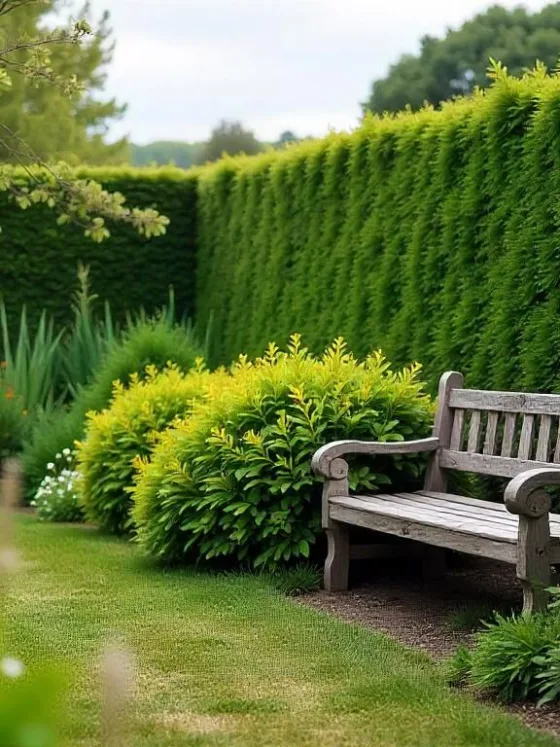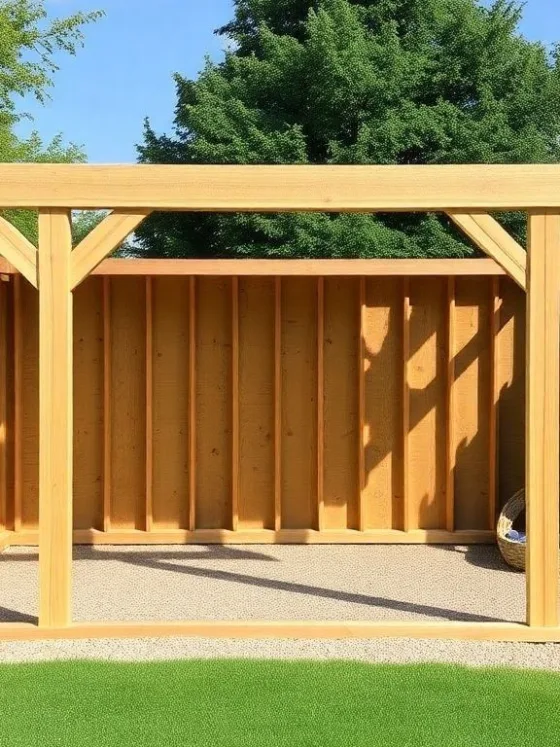Many people have noticed the escalating price of fresh produce at the local supermarket and from the wayside stands that offer us our daily intake of vegetables and fruits.
Unfortunately, living in a colder climate means that we are at the mercy of the economics of the produce market for a good part of the year.
From when I was just a boy, I was familiarized with the pleasures of growing a vegetable garden and the produce that one large area of the landscape at my parent’s home afforded me.
There is really nothing like grabbing a tomato fresh off the vine or pulling a carrot out of the ground and biting into it. The freshness is beyond compare to the expensive produce we have become burdened with at the local supermarket.
In this installment of Stefan’s Corner, I will discuss some of the opportunities available for growing vegetables in your landscape – allowing you to also experience the true meaning of freshness!
Now I do not propose to say that there is no place for the supermarket in our lives.
For starters, many fruits and vegetables just will not grow in northern climate backyards.
As also mentioned, the length of our growing season in the region is just too short to have some vegetables growing to offer fresh produce throughout the year, nor are we able to grow crops with long growing seasons before they produce anything of consumable substance.
However, as I was driving into work this week, I listened to an item on the radio that discussed the devastating effects of globalization on our health because of a global market produce economy where fruits and vegetables are picked early to ripen in transport.
If we are to get the full nourishment from the foods we eat, then it is important to look at the foods which we can produce locally – or as the radio piece suggested, within 100 miles of where we live.
This philosophy is not new. It is only coming to light because of the continued reports of ill health that we are experiencing even though we have the world within our grasp every day of the year.
Unfortunately, this is an ill-fated illusion.
So how does one start a vegetable garden? First, determine the type and scale of garden you need.
Some people are only ‘grazers’ and need a small garden or a few select vegetable plants that can be incorporated into their garden.
Others require the ability to grow fresh produce for a whole family, or if a vegan or you have heavy vegetable consumption in your diet, then maybe a traditional large vegetable garden is appropriate.
The following are the qualities of the various types of vegetable gardens which may be incorporated into a landscape.
Traditional Vegetable Gardens
We are all familiar with this type of vegetable garden. It is the one our parents had, and our grandparents, and so on, for many generations back.
It has been an easy way to carve out something that has always been seen as solely a ‘functional’ item in the landscape.
Contemporary trends have seen hedges and flowers being added to not only make the large vegetable garden look appealing but also to aid in companion planting practices to help reduce the use of chemical pesticides.
But the traditional vegetable garden still holds a purpose for large families, people who still do a great deal of canning (a dying art I am finding), local market gardening opportunities for community fairs and farmers markets, and a resource for the truly avid gardener to grow and display the things that make them the stewards of the residential landscape.
It is because of these avid gardeners that we can enjoy heritage vegetable crops, and the pleasures of virtually extinct plants which may unlock the doors to cures for numerous existing and future ailments and diseases.
I recently had the pleasure of selling heirloom tomatoes at the Friends of the Assiniboine Park Conservatory’s annual Mothers’ Day fundraiser.
Read Also :
- 6 Tips for Yard & Garden Tool Maintenance, Fall Cleaning for the Tools of Your Trade
- Hardy Roses for Northern Gardens a Selection Beyond Imagination
- Exploring Foundation Gardens, Critical Plantings for Effective Landscapes
- About Gardening in a Wheelchair
I had 300 different varieties of tomatoes in my purview, and as people asked about their characteristics and origins of them I was able to see just how varied one crop (tomatoes) can be. Such avid delights require a significant designation of land to experiment and produce these crops.
Like tomatoes for tomato lovers, other crops like corn, potatoes, pumpkins, cucumbers, and most members of the Cucurbit family need a great amount of space. These truly become harvesting gardens.
These types of gardens are usually in the form of a large rectangular bed occupying a significant portion of the landscape. A traditional vegetable garden needn’t be obtrusive as it has been in past incarnations.
Many people have developed their landscapes so that the vegetable garden is but another outdoor room in the landscape. It also needn’t be rectangular.
All too often the space which is ideal for the vegetable garden in the landscape is not rectangular in form, or it may also be part of a greater concept that lends the shape into something more circular or ovate in nature.
If you are an individual who requires a large vegetable garden then you may consider the form that fits your needs.
Do not be afraid to use a different form as the crop lines needn’t always be linearly aligned. Curved rows of crops can be just as productive as straight ones, and they can be visually appealing as well.
Another positive aspect of these gardens is the ease of maintenance.
Turning over a large harvest or traditional vegetable garden is made easy with the use of a rototiller.
It is also easier to evenly spread and turn in organic compost, or other nutrients when required.
But such a large undertaking can be a daunting task, and for this reason many without the luxury of personal time to tend a large vegetable garden or the funds to hire a gardener don’t bother.
So enter the supermarket – your local garden without effort. But it needn’t be the only source of your nutritional dietary supplement of fresh produce.
Kitchen Gardens
Kitchen gardens, as they have come to be known, are becoming very popular for the very reasons that I mentioned in the opening paragraphs.
People are becoming aware of the carrying capacity of the Earth and our need for fresh and better quality produce.
However, unlike its traditional sibling, the kitchen or salad garden is of a smaller, more compact scale.
Often they consist of a series of raised beds or a small single bed in the landscape, planted with such replenishing or short-term crops like lettuce, carrots, herbs, pole beans, determinate tomato plants, chives, radishes, leaf and collard greens, and anything that can be harvested and/or replanted to produce a second harvest in our short northern climate growing season.
These smaller gardens can be nestled closer to the house, leaving the remainder of the yard open for entertainment areas, or for children to run and play.
They can be tucked away in a corner, near or part of a deck or patio, as a focal point in the landscape, or close to the kitchen itself to increase the link between the two spaces in an existentialistic design concept.
As a small space or likely raised with retaining walls of some sort, power tilling is not practical, but the scale of the garden makes it more readily maintained by manual efforts.
It is a great way to introduce novice gardeners to the pleasures of growing their own produce, as well as breaking new ground for them to the true taste of freshness.
These vegetable gardens are a great resource for a smaller scale yard or a smaller family, along with first-time gardeners, empty nesters, and elderly people who once had a large garden but no longer have the energy or the desire to tend a vegetable garden on a grand scale.
For people on the go, like many of us in the workforce, it offers an opportunity to relax and feel like something we do actually matters when the workday is rough.
As many of these gardens can be designed with varying levels, it offers the ‘avant-garde gardener’ an outlet to try something interesting and unusual.
And it opens the door for vertical gardening. In this day and age when people seek out different experiences, vertical gardening has become an interest of many people.
Trellises, obelisks, and tomato cages are being sold more than ever at garden centers.
When space is restricted, the only way to go is up, right? Picture it an espaliered tomato, or a zucchini tree! Whatever your fancy, try something vertical.
Another way to achieve an avant-garde kitchen garden is to plant it in containers.
Larger containers can be a home for tomatoes, root crops like carrots, potatoes, and beets, to name a few, as well as vine crops like zucchini and cucumbers.
Crops and herbs with less significant root structures or growing mass can easily be planted in smaller containers, and subsequently scattered throughout the garden or clustered with other containers.
Add a few flowers or companion plants, and the containerized kitchen garden can even be structured as an interesting grouping to achieve a distinct focal point in the landscape.
Cottage Gardens
Similar in practice to the kitchen garden, a true cottage garden incorporates trees, shrubs, herbaceous perennials, and annuals, as well as herbs and vegetables to make it complete.
Cottage gardens were traditionally harvest gardens but never did the Victorians harvest all of one item at any given time.
This left a garden that always looked complete even though a head lettuce that once grew there was now the feature salad on that night’s dinner menu.
And that ripe red tomato that drew our eyes to a particular corner of the garden is now a sauce on the pasta, but its mother plant is still there ready to nurture another one of her young to regain that focus.
In the cottage garden, no plant is missed when harvested and thus offers the gardener a place where they can truly practice their trade while incorporating the vegetable garden within it.
In colder climates within the region, vegetable gardening really doesn’t start until the last week in May or the first couple of weeks in June.
So when looking at your gardens this weekend and wishing you could have a garden, think about the type of vegetable garden you would need or which best suits your dietary needs.
Consider a small kitchen garden at first, so that you can start being a part of the human consciousness that is seeing the Earth in a different light.
Once you have tasted the first fruits of your labor, you will wonder how you did without the true taste of freshness.
When you are forced to buy consumer-produced vegetable crops at a local supermarket, whether it be because of weather or just poor crops, you will immediately see the difference and want to expand your vegetable crop growing in the future.
But employ the kitchen garden first to get yourself acquainted with the practice of vegetable gardening for your life.
Until next time – Happy Vegetable Gardening!














